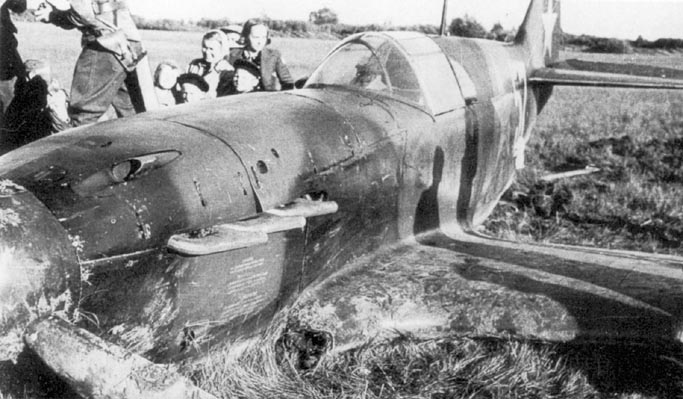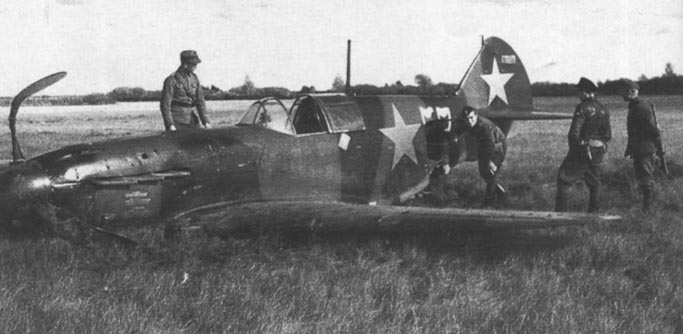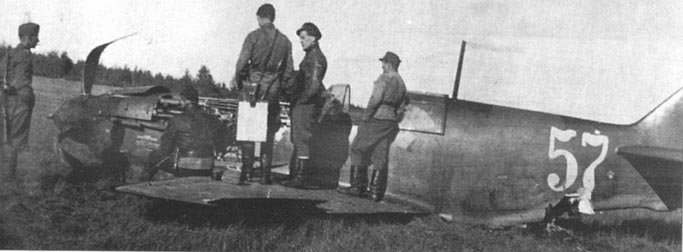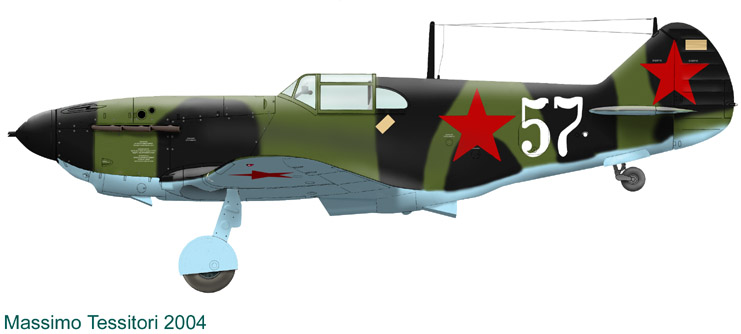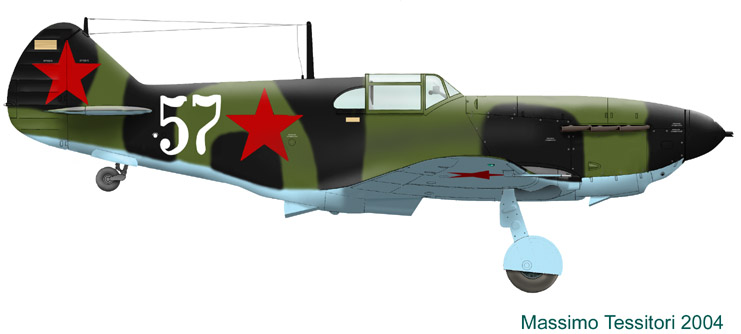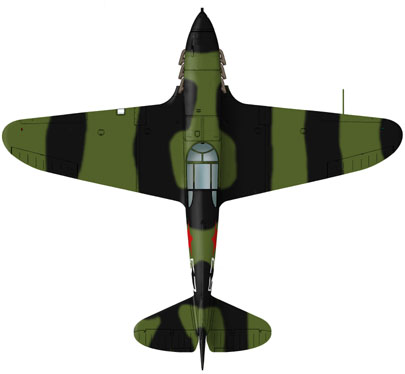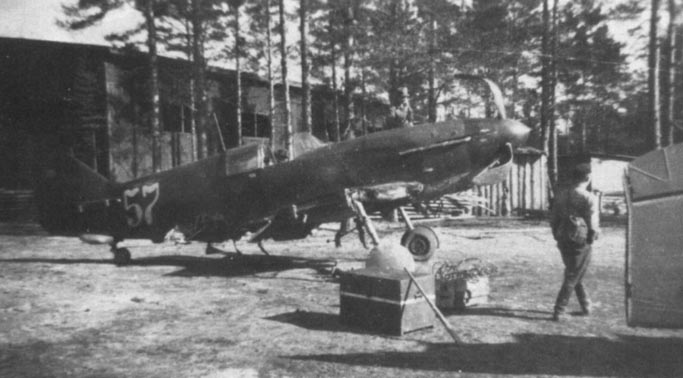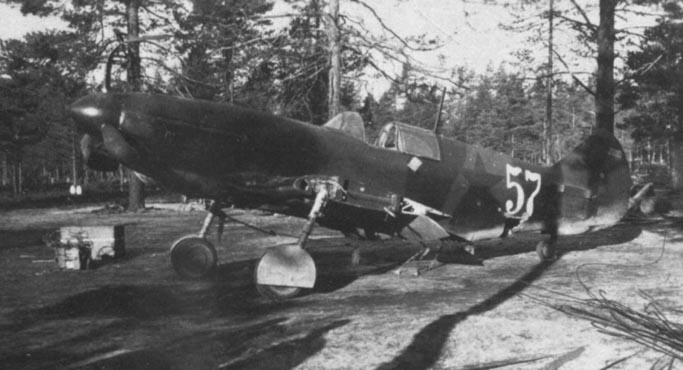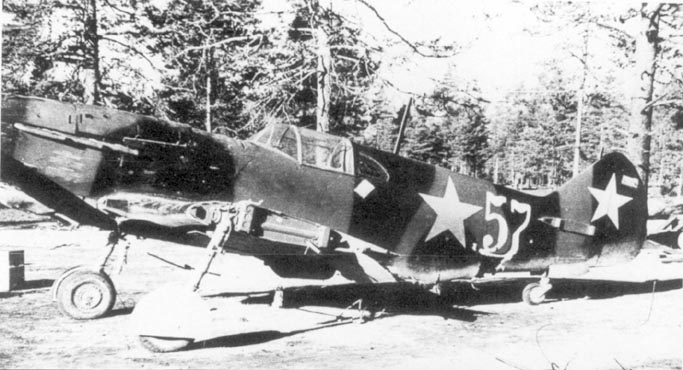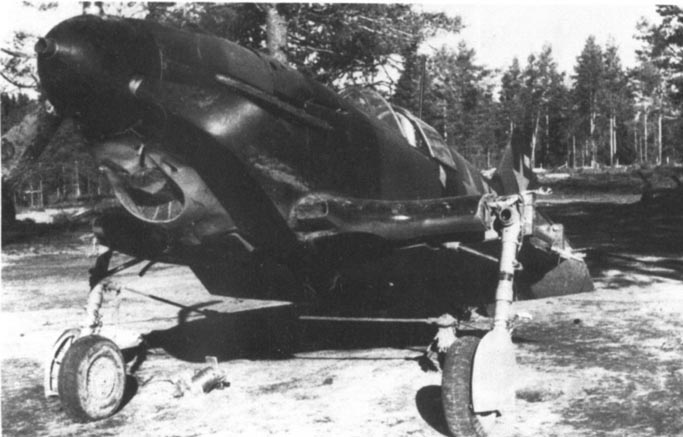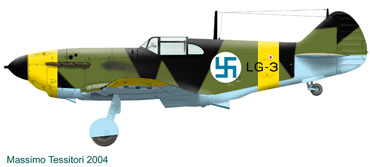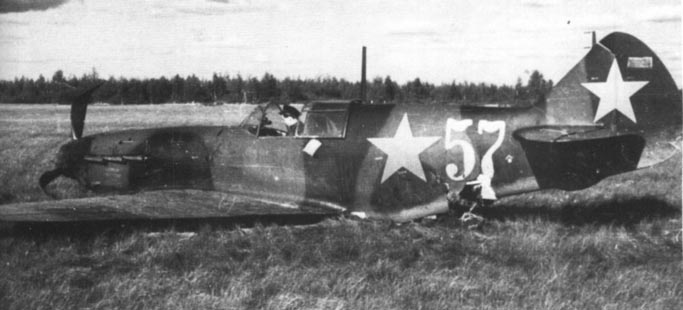
The aircraft was damaged by the Finnish pilot Altto Tervo during a combat over the Olonets isthmus.
It probably belonged to 524 IAP.
The serial of the aircraft was 3121357.
It left the factory on 11 August 1942, and had been in service for a short time when it was captured.
We see some training bar under the fuselage in correspondance to the "57".
